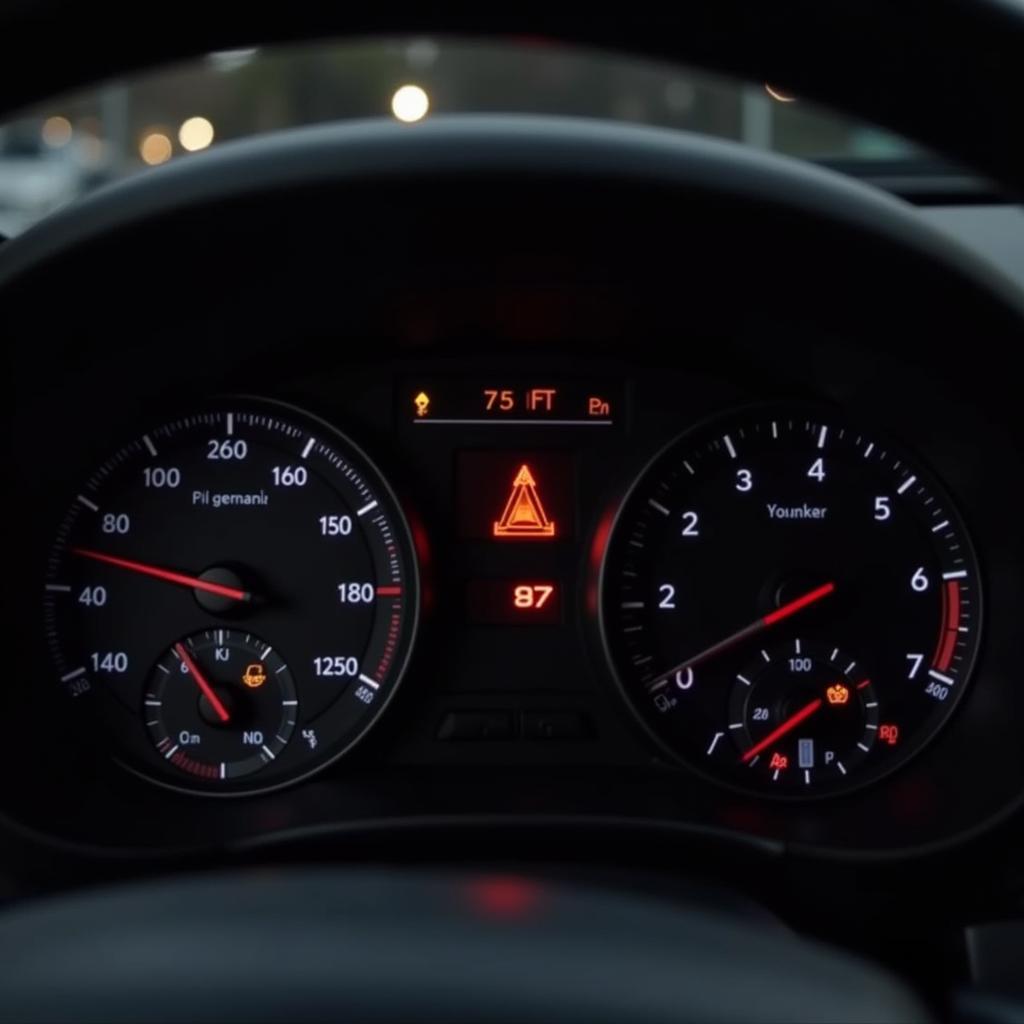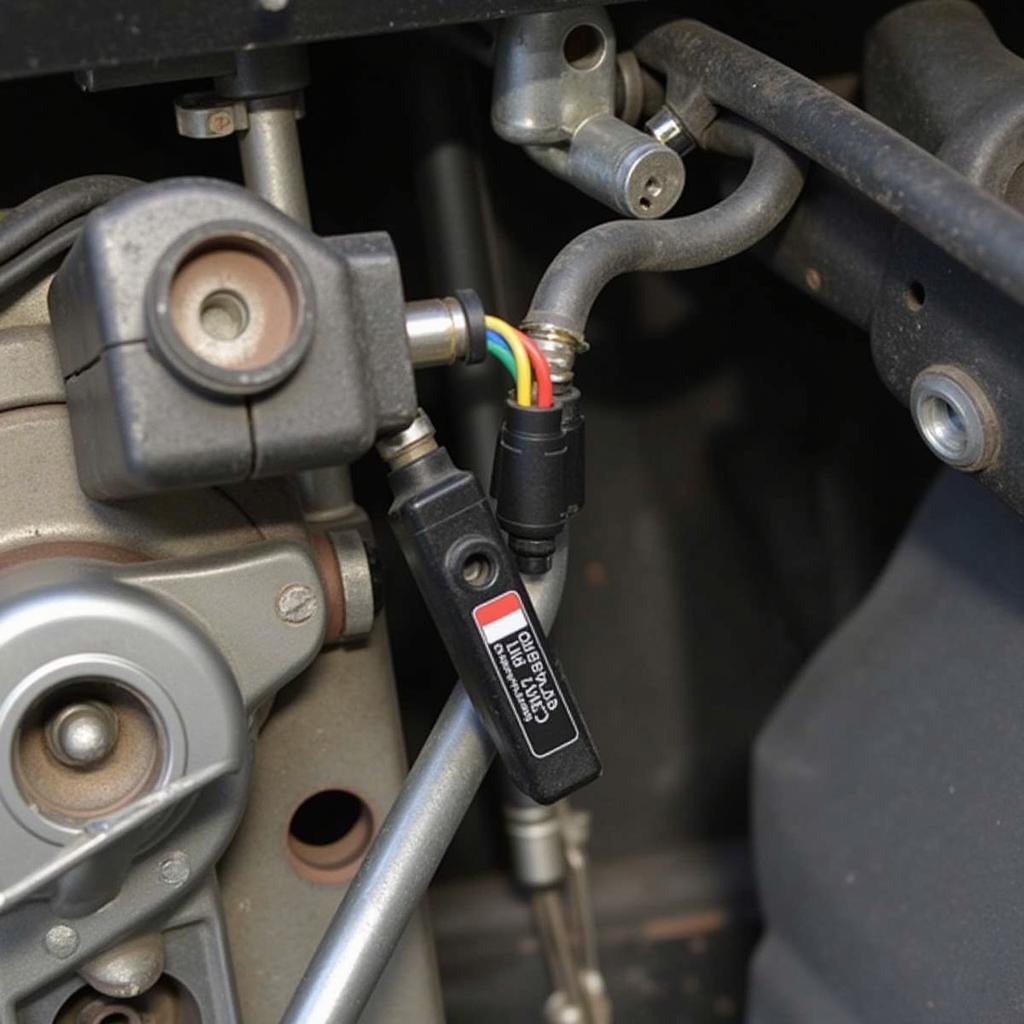The dreaded Mercedes ML350 brake light warning can be a real headache. From a simple worn brake pad to a more complex issue with the braking system, understanding what triggers this warning light is crucial for your safety and the longevity of your vehicle. This guide will walk you through the common causes, diagnostic steps, and potential solutions for the Mercedes ML350 brake light warning. You’ll learn how to tackle this issue effectively, whether you’re a seasoned DIYer or prefer professional assistance.
Understanding Your ML350’s Brake Warning System
The brake warning light in your Mercedes ML350 isn’t just a single indicator; it’s part of a sophisticated system designed to alert you to potential problems. While the most common culprit is low brake fluid, a range of issues can trigger the warning light, including a faulty brake light switch, worn brake pads, or problems with the ABS (Anti-lock Braking System). Ignoring this warning can lead to costly repairs and potentially dangerous driving conditions. Are your brakes feeling spongy? Do you hear any unusual noises? These could be further signs of a braking system issue.
 Mercedes ML350 Brake Warning Light Illuminated
Mercedes ML350 Brake Warning Light Illuminated
Common Causes of the Mercedes ML350 Brake Light Warning
The brake warning light in your Mercedes ML350 could be triggered by a number of issues, each requiring different approaches to diagnose and repair. Low brake fluid is a frequent cause and could indicate a leak somewhere in the system. Worn brake pads and rotors are another common culprit, as they trigger sensors that illuminate the warning light. Additionally, issues with the ABS system, including faulty sensors or a malfunctioning pump, can also trigger the warning. Finally, a faulty brake light switch can be a simple but often overlooked cause. This switch signals when the brake pedal is depressed, activating the brake lights and potentially the warning light on the dash.
Diagnosing the Problem: A Step-by-Step Guide
- Check the brake fluid level: Locate the brake fluid reservoir under the hood and check the fluid level. If it’s low, top it off with the correct DOT specification fluid. However, low fluid often indicates a leak, which requires professional attention.
- Inspect the brake pads: Visually inspect the brake pads through the wheel spokes. If they appear thin or worn, they likely need replacing.
- Listen for unusual noises: Squealing or grinding sounds when braking could indicate worn pads or rotors.
- Check the brake light switch: Test the brake lights. If they aren’t working, the brake light switch may be the issue.
When to Seek Professional Help
While some issues, like a faulty brake light switch, can be addressed by a DIYer, others require the expertise of a qualified technician. If you suspect a brake fluid leak, ABS system malfunction, or are uncomfortable working on your brakes, it’s best to take your ML350 to a certified mechanic. They can perform a thorough diagnosis using specialized equipment and ensure the proper repairs are carried out. “Brake systems are critical safety components,” says automotive expert, David Miller, “and it’s always better to err on the side of caution when dealing with them.”
Preventing Future Brake Light Warnings
Regular brake inspections and maintenance are crucial for preventing future brake light warnings. This includes checking brake fluid levels, inspecting brake pads and rotors, and ensuring the braking system is functioning correctly. Following the manufacturer’s recommended maintenance schedule is the best way to keep your ML350’s brakes in optimal condition. “Preventive maintenance is always cheaper than reactive repairs,” adds Miller. “Regular checks can save you money and headaches down the road.”
mercedes brake warning light ceramic pads
2007 buick rendezvous brake warning alarm
mazda cx 7 brake warning light
Conclusion
Addressing the mercedes ml350 brake light warning promptly is essential for ensuring your safety and the longevity of your vehicle. By understanding the various causes and following the diagnostic steps outlined in this guide, you can effectively tackle this issue and get back on the road with confidence. Remember, when in doubt, consult a qualified mechanic for professional assistance.
FAQ
- What does the mercedes ml350 brake light warning mean? It signals a potential problem with your braking system, ranging from low brake fluid to worn brake components.
- Can I drive with the brake light warning on? It’s not recommended. Continuing to drive could lead to further damage and potentially dangerous situations.
- How do I check my brake fluid level? Locate the brake fluid reservoir under the hood and check the markings on the side.
- How often should I check my brake pads? It’s good practice to visually inspect them every few months or whenever you hear unusual noises during braking.
- What should I do if I suspect a brake fluid leak? Immediately take your vehicle to a certified mechanic for diagnosis and repair.
- Can I replace my brake pads myself? While possible, it’s recommended to have a professional handle brake repairs, especially if you’re not mechanically inclined.
- How can I prevent future brake light warnings? Follow your manufacturer’s recommended maintenance schedule and address any brake-related issues promptly.



